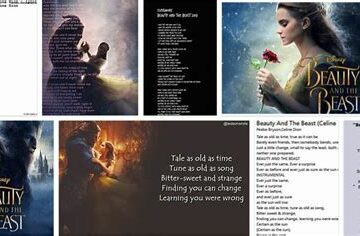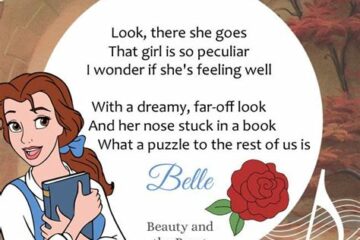The Historical Context Of The Original Beauty And The Beast Story

The Historical Context Of The Original Beauty And The Beast Story
Exploring The Historical Origins Of Beauty And The Beast
The origins of the tale of Beauty and the Beast can be traced back to various cultures and traditions, each adding its unique flavor and moral lessons to the narrative. The most notable early version is credited to French novelist Gabrielle-Suzanne Barbot de Villeneuve, who penned the original story in 1740. Her version contained rich details regarding the characters’ backgrounds and the intricate nature of the Beast’s curse, emphasizing themes of inner beauty and redemption.
However, an even more popular adaptation came from Jeanne-Marie Leprince de Beaumont in 1756, who simplified the story for a younger audience. This version is often regarded as the definitive form of the tale, stripping away many complexities while reinforcing the moral core that has persisted through generations.
Within the broader spectrum of folktales, parallels can be found in various cultural artifacts around the world. For instance, tales similar to Beauty and the Beast have appeared in regions such as ancient Greece and the Middle East, showcasing the universal appeal of the story’s central themes. The narrative’s ability to weave love, sacrifice, and transformation resonates deeply across different societies, demonstrating how stories evolve yet maintain a consistent message about the strength of love and the importance of looking beyond surface appearances.
Moreover, historical contexts—such as differing societal norms regarding marriage and gender roles—also played a crucial role in shaping these stories. The evolution from warning tales to romantic narratives reflects broader changes in societal attitudes towards love and relationships, making the continuance of the historical story relevant for audiences then and now.
Cultural Influences Shaping The Historical Narrative
The historical narrative of The Historical tale, *Beauty and the Beast*, is rich with cultural influences that have contributed to its enduring appeal. This narrative has evolved through various retellings across different societies, reflecting the values, norms, and beliefs of each era.
One significant influence stems from the fairy tale tradition prevalent in Europe during the 17th and 18th centuries. Authors like Charles Perrault and the Brothers Grimm adapted earlier folk tales, infusing them with moral lessons that resonated with contemporary audiences. This trend laid the groundwork for the themes of redemption and transformation present in *Beauty and the Beast*.
Additionally, the Enlightenment period brought forth a fascination with individualism and the human condition, another element that shaped the narrative. The story’s central conflict—between inner beauty and outward appearances—mirrors the philosophical inquiries of this time, prompting audiences to contemplate the essence of humanity.
Economic and social changes also played a crucial role. As classes began to intermingle more, the notion of marrying for love rather than social status gained traction. This shift allowed the tale’s romantic elements to resonate more deeply with audiences, emphasizing personal connection over material concerns.
Moreover, cultural perceptions of gender and relationships have influenced the way *Beauty and the Beast* is interpreted. The concept of the beast as a figure of male power and the transformative potential of love highlights evolving roles within society, encouraging discussions around feminism and the dynamics of love and agency.
In recent adaptations, these cultural influences continue to evolve. Modern retellings often challenge traditional gender roles and explore themes of consent and autonomy, further enriching the narrative and its relevance in today’s society. Thus, the cultural influences shaping the historical narrative of *Beauty and the Beast* are as diverse as they are profound, ensuring the tale remains both timeless and timely.
Transformations In The Tale: A Historical Overview
The tale of Beauty and the Beast, like many fairy tales, has undergone significant transformations throughout its history. These changes reflect not only shifts in storytelling traditions but also the evolving cultural values of the societies that embraced the narrative. From early oral traditions to the polished literary versions we know today, the story’s essence has been reshaped by various influences.
One of the earliest known versions of the tale dates back to ancient Greece, where themes of transformation and redemption were prominent. However, it was in 1740, when French novelist Gabrielle-Suzanne Barbot de Villeneuve published her version, that the story began to take on characteristics recognizable to modern audiences. Villeneuve’s rendition introduced complex characters and moral undertones, which laid the groundwork for future adaptations.
The subsequent retelling by Jeanne-Marie Leprince de Beaumont in 1756 significantly abbreviated Villeneuve’s narrative, focusing on the love story between Beauty and the Beast. This version emphasized themes of inner beauty and virtue, reflecting the Enlightenment ideals of the time. Beaumont’s adaptation popularized the tale, influencing countless adaptations, including stage performances and films.
As the centuries progressed, adaptations of the story continued to flourish, each adding its unique cultural interpretations. The rise of Romanticism in the 19th century introduced more fantastical elements and emphasized emotional depth, while various animated versions in the 20th century highlighted visual storytelling, changing the way audiences engaged with the narrative.
In contemporary adaptations, such as Disney’s animated classic and its live-action counterpart, the focus has also shifted to themes of empowerment and equality, further showcasing how The Historical journey of Beauty and the Beast reflects changing societal norms and values. These transformations illustrate the tale’s resilience and adaptability, ensuring its place in cultural history.
Understanding The Historical Context Of The Original Story
To truly grasp The Historical significance of the original Beauty and the Beast story, it’s essential to delve into the societal and cultural circumstances that framed its narrative. The tale can be traced back to various sources, each reflecting the values, beliefs, and norms of its time. From ancient folklore to 17th-century France, the story has undergone numerous adaptations, revealing the evolution of its themes and characters.
The original story’s context must be understood through the lens of the time periods in which it was told. During the 17th century, when Gabrielle-Suzanne Barbot de Villeneuve published the first written version, societal expectations around class, femininity, and marriage were particularly pronounced. The notion of the ‘beast’ symbolizes various qualities such as appearance, status, and morality, which were vital considerations for individuals in navigating their roles within a hierarchical society.
Furthermore, the themes of redemption and transformation speak to a historical longing for change and the potential for personal growth within restrictive societal structures. In a time where arranged marriages were common, the idea of love emerging from a place of despair was revolutionary, positioning the story as both a fairy tale and a commentary on the societal expectations of intimacy and partnership.
As the tale has transformed across cultures and eras, it continues to reflect the ongoing evolution of societal values, making it a rich subject for understanding the impact and relevance of The Historical contexts that shape storytelling. Through this lens, Beauty and the Beast serves not only as entertainment but also as a historical document that captures shifting human perspectives on love, class, and morality.
Lessons From The Historical Elements Of Beauty And The Beast
The historical context of the original story of Beauty and the Beast presents various lessons that resonate through time, reflecting societal values and human experiences. One of the primary lessons is the significance of inner beauty over external appearances. The transformation of the Beast into a figure of empathy and love highlights the importance of understanding and acceptance beyond superficial judgments. This theme encourages readers to contemplate their own perceptions of beauty and how these views may align with broader societal norms.
Another crucial element is the representation of love as a transformative power. Throughout various adaptations of the tale, love is often depicted as a redemptive force, capable of overcoming obstacles. This mirrors historical societal beliefs that love and compassion could heal rifts and foster personal growth. The emphasis on emotional intelligence and the ability to nurture relationships offers meaningful insights into the value of connection in a sometimes harsh world.
Furthermore, the story underscores the role of sacrifice and personal growth in relationships. Characters in the original tale often face challenges that require them to confront their fears and insecurities. This reflection can serve as an allegory for real-life experiences where overcoming adversity is essential for personal development and stronger relationships. Such elements weave the moral fabric of the narrative, reinforcing the notion that growth often arises from struggle.
The Historical elements present in Beauty and the Beast encourage discussions about gender roles and societal expectations. The evolution of the characters, particularly the portrayal of Beauty’s independence and agency, invites a reevaluation of traditional gender dynamics. This fosters important conversations about empowerment and equality, both within the story and in contemporary contexts.
The lessons drawn from the historical elements of Beauty and the Beast offer a wealth of insights into human nature, societal values, and the importance of emotional connections. Through its rich narrative, the original tale continues to inspire reflections on love, beauty, sacrifice, and personal growth.
Top 10 Disney Characters You Didn’t Know About
December 30, 2024A Deep Dive Into Disney Princesses And Their Stories
December 29, 2024The Meaning Behind Beauty And Beast Lyrics
December 29, 2024Why Beauty And The Beast Is A Timeless Disney Classic
December 29, 2024The Role Of Disney Princesses In Modern Culture
December 29, 2024Exploring The Themes In Beauty And The Beast Lyrics
December 28, 2024
Leave a reply Cancel reply
Recommended
-
Beauty and the Beast Reprise Lyrics
November 16, 2021 -
Beauty and the Beast Lyrics
October 6, 2021 -
Exploring The Mythology And Origins Of Beauty And The Beast
December 6, 2024









